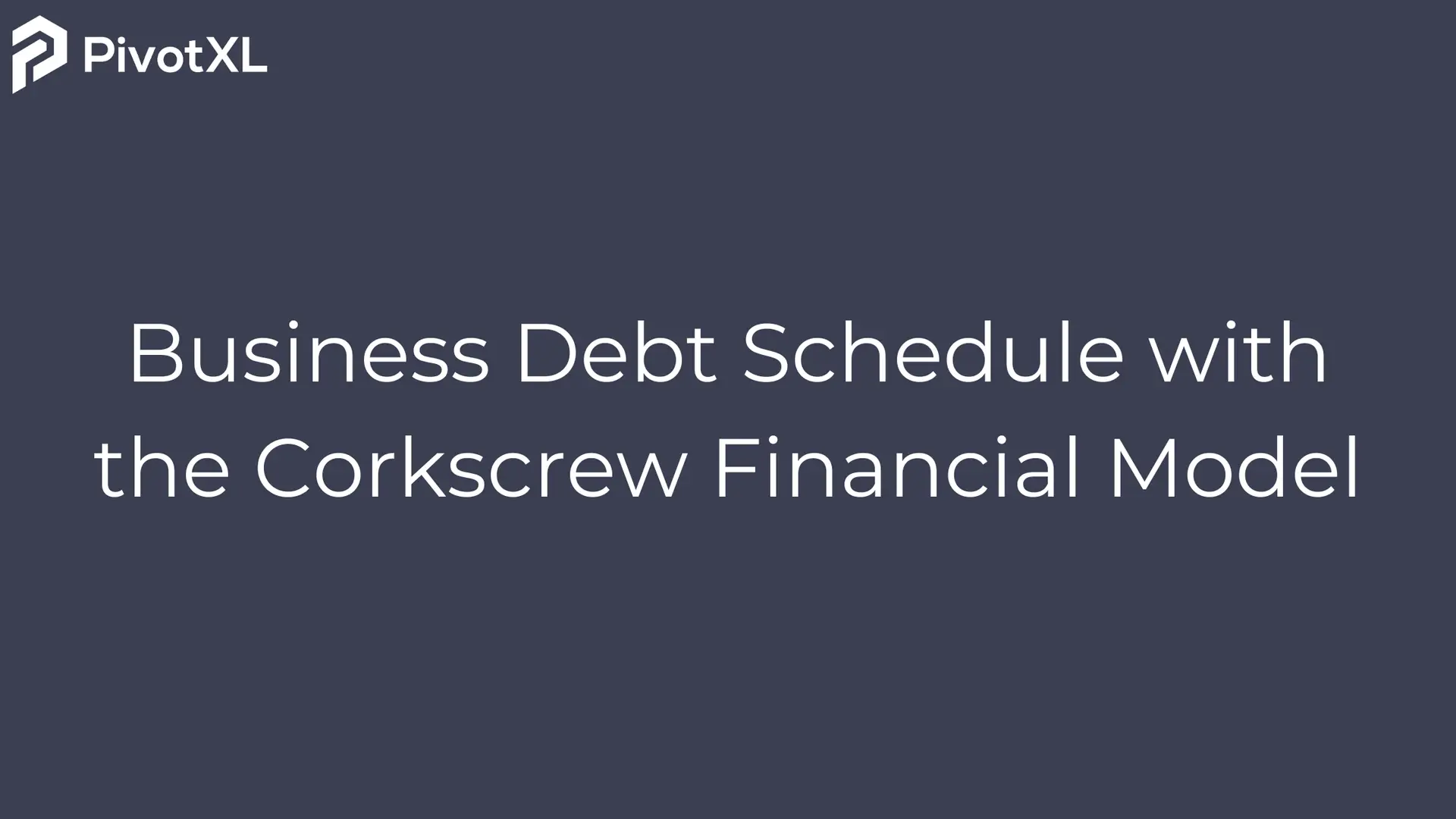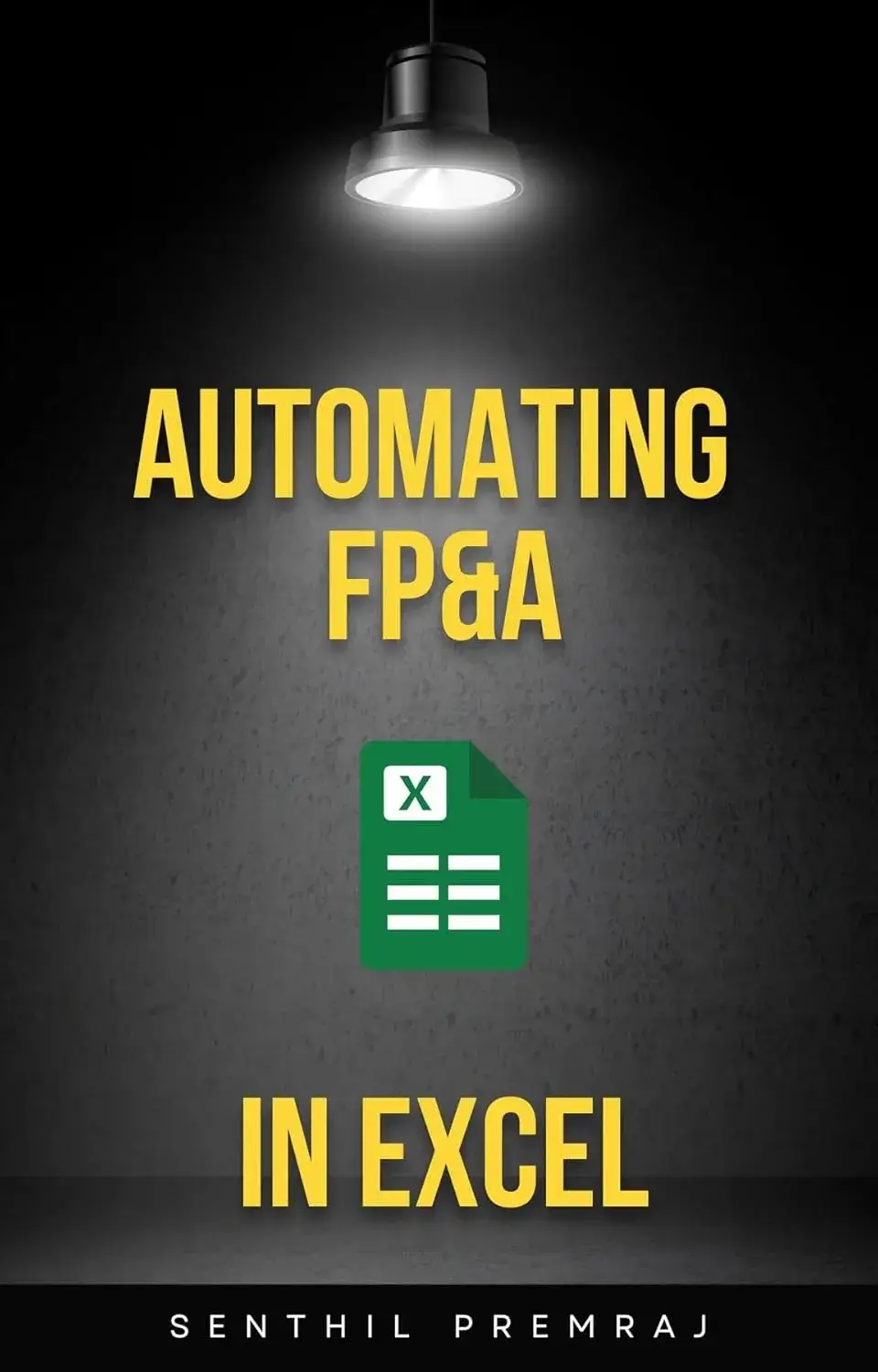Managing business debt is a key responsibility for today’s CFOs, and without a structured approach, it can become overwhelming. As a strategic finance executive with over 25 years of experience, I’ve witnessed firsthand how mismanaged debt can derail even the most promising companies. However, with the right tools and frameworks, business debt schedule management becomes a powerful financial strategy rather than a burden.
One of the most effective ways to manage business debt is by using the corkscrew financial model, which simplifies debt scheduling, including repayments, interest expenses, and cash flow forecasting. This structured approach ensures that finance teams can make informed decisions, mitigate risks, and enhance financial stability.
In this guide, we will explore how the corkscrew financial model can simplify complex debt structures and improve financial decision-making for CXOs.
Understanding the Business Debt Schedule
A business debt schedule is an essential tool that outlines a company’s long-term debt obligations, including loans, leases, bonds, debentures, and other liabilities with periodic payments. A well-maintained debt schedule allows CFOs and finance teams to:
- Understand Capital Capacity – Evaluate how much financial runway the company has based on its debt obligations.
- Analyze Debt Capacity – Determine whether the company can take on additional debt without excessive risk.
- Anticipate Funding Needs – Identify upcoming cash shortfalls that may require additional financing.
For example, if a company has multiple loans, finance teams may struggle to track repayment dates, leading to missed payments and penalties. A debt schedule prevents this by providing clear visibility into all obligations. Suppose a business has a $100,000 loan repayment due in Q3 and $50,000 in total interest payments spread across the year. With a structured debt schedule, the finance team can plan cash flow accordingly, ensuring timely payments without disrupting operations.
A debt schedule directly impacts financial statements:
- Income Statement: Interest expenses from the debt schedule are recorded as costs.
- Balance Sheet: The closing debt balance appears as a liability.
- Cash Flow Statement: Principal repayments flow under financing activities.
Why SaaS Businesses Need a Debt Schedule
SaaS businesses operate differently from traditional companies, particularly regarding financing. Many SaaS firms rely on debt rather than equity funding to scale operations. A structured debt schedule benefits SaaS businesses in several key ways:
1. Managing Cash Flow Efficiently
SaaS businesses operate on recurring revenue models, meaning cash inflows fluctuate based on subscription renewals, churn, and expansion revenue. Tracking debt-related information in one place helps finance teams maintain control over repayments and liquidity.
2. Strategizing Debt Repayments
CFOs must prioritize certain liabilities over others, such as those with higher interest rates or early repayment penalties, to optimize financial efficiency. A well-maintained debt schedule allows finance teams to develop repayment strategies that minimize costs and maintain healthy cash flow.
3. Strengthening Financial Planning
A debt schedule enables finance teams to model different debt scenarios and assess how future borrowing impacts growth and profitability. This forward-looking approach is crucial for capital allocation and business expansion planning.
4. Improving Investor and Creditor Relations
Investors and creditors scrutinize a company’s financial health before providing funding. A well-documented debt schedule increases transparency and credibility, making it easier to secure additional financing at favorable terms.
The Corkscrew Financial Model for Debt Scheduling
The corkscrew financial model ensures consistent tracking of debt balances by rolling forward the previous period’s closing balance as the starting point for the current period. Unlike traditional tracking, which compares month-over-month balances without clear line-item changes, the corkscrew model allows finance teams to analyze specific account movements affecting debt levels.
This detailed tracking offers better insights into cash flow and financial stability. The corkscrew model is also versatile and applicable across various financial areas, including:
- Debt paydowns and accruals
- Depreciation and capital expenditures
- Net operating losses for tax purposes
- Balance sheet accounts
How to Build a Debt Schedule Corkscrew Model
Implementing a debt schedule corkscrew model involves four key steps:
Step 1: Gather Data
Collect all relevant debt details, including:
- Initial debt balances
- New debt terms
- Repayment schedules
- Interest rates
Set up a structured spreadsheet with columns for each month and rows for beginning balance, draws, paydowns, interest accruals, and ending balance.
Pro Tip: Using FP&A software like PivotXL automates data consolidation, reducing errors and saving time.
Step 2: Determine the Beginning Debt Balance
The previous period’s ending balance serves as the starting balance for the current month. For example, if a company has a beginning debt balance of $150,000 in January 2024, this amount rolls forward to February.
Step 3: Add Draws and Subtract Paydowns
Add new loans or draws from existing credit lines while subtracting repayments to track reductions in principal. For instance, if a company takes a $5,000 loan draw in March 2024, the debt balance increases to $151,000. If the company makes a $2,000 repayment, the ending balance adjusts to $149,000, rolling forward to April.
Step 4: Calculate the Ending Balance
The ending balance for each period follows this formula:
Ending Balance = Beginning Balance + Draws + Interest Accrued – Paydowns
This rolling structure ensures accurate tracking of debt movements over time.
Challenges of Using the Corkscrew Model for Debt Scheduling
While the corkscrew model provides valuable insights, implementing it comes with challenges:
1. Data Management and Accuracy
Since spreadsheets are primarily used in corkscrew financial modeling, consolidating and integrating data from multiple sources can be time-consuming. Manual data entry also increases the risk of errors.
2. Managing Complex Debt Structures
Many SaaS companies take on various types of debt, including bank loans, venture debt, and lines of credit. Each debt type has unique terms and conditions, requiring careful tracking and analysis within the model.
3. Regulatory Compliance
Different debt types come with distinct reporting standards and regulatory requirements. Ensuring compliance with financial regulations adds complexity to debt schedule management.
4. Regular Updates
The debt schedule needs to be updated frequently to reflect changes such as interest rate fluctuations, refinancing, or new debt issuance. Without consistent updates, the model can become unreliable.
Leveraging Technology for Smarter Financial Planning
The corkscrew model is a powerful tool for business debt schedule management, but its accuracy depends on the quality of data used. To enhance its effectiveness, businesses should use financial forecasting software.
A solution like PivotXL can:
- Automate data consolidation from multiple sources
- Reduce manual entry errors
- Improve forecasting accuracy
By integrating financial modeling and forecasting tools, businesses can make data-driven decisions that strengthen their financial health and long-term success. Managing debt doesn’t have to be a daunting challenge—with the right approach, it can be transformed into a strategic advantage that supports sustainable growth.




